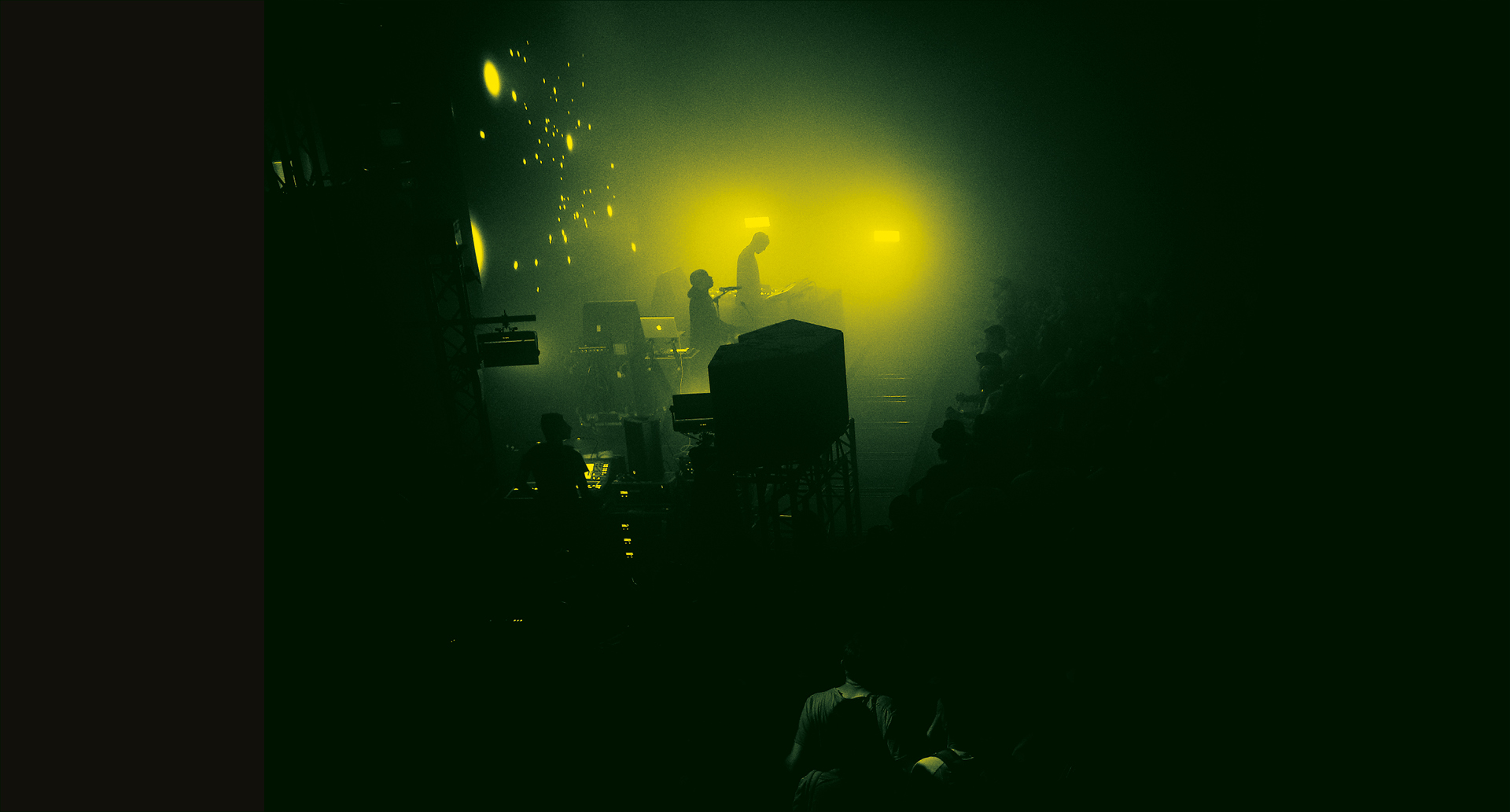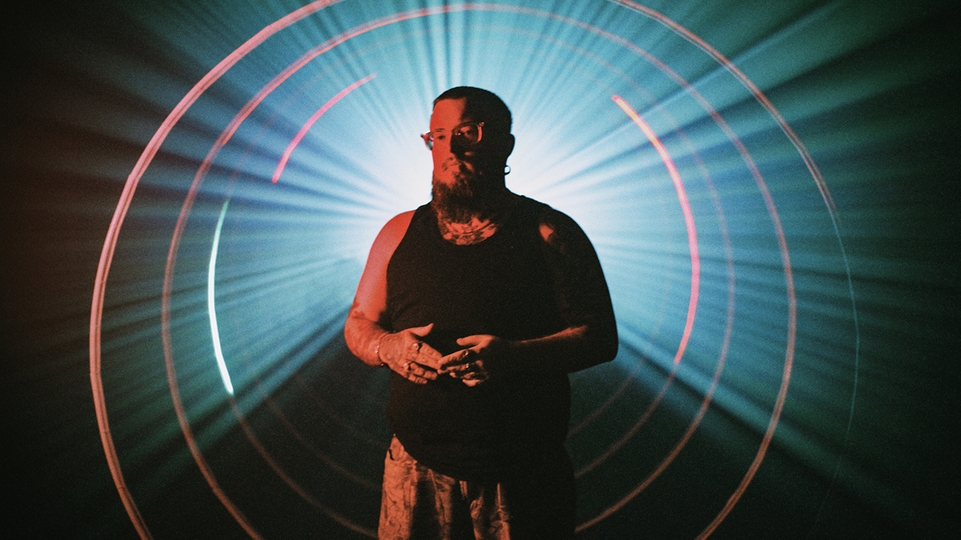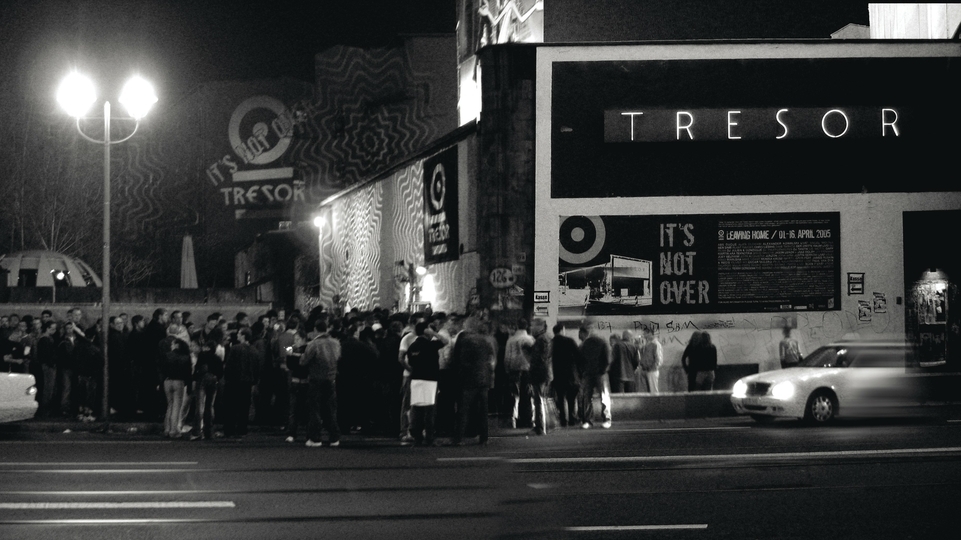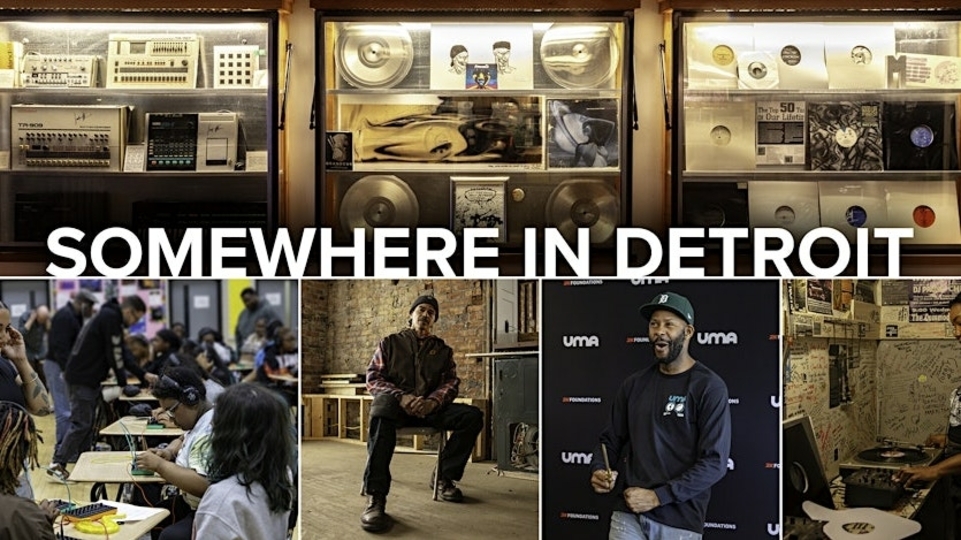
Techno pioneer Juan Atkins is rewiring his electro legacy
Ahead of his first ever shows as pioneering Detroit electro unit Cybotron, techno innovator Juan Atkins tells us why he’s revisiting his past — and in the process, making a warp-speed jump into the future...
Juan Atkins has always been, in his own words, “a music lover”. Growing up in Detroit, he would treat his parents’ dinner parties as an opportunity to act as DJ for the night, taking control of the record player to share what was catching his ear as a young, impressionable teenager. This was some years before he would first be exposed to synthesizers and electronic music, and go on to form countless essential partnerships as a producer, DJ, label owner and mentor.
It was in 1977 at the age of 15 that Juan would come to own his first synth, a Korg MS10. Having spent some time messing around with the machine in a shop, he eventually persuaded his grandmother to make the purchase, and quickly set about getting to grips with its functions, experimenting and building an arsenal of personal demo recordings far beyond his years. It was when he first heard the music of Kraftwerk, though, during the early ’80s — an act that he describes as an “extension of [the] electric disco” of Giorgio Moroder and others that was so popular on US radio in the previous decade — that things truly started to take shape. That road would eventually lead to Juan forming Cybotron alongside Vietnam War veteran Rik Davies in 1981, with whom he would release one of electro’s most-loved and influential albums, 1983’s ‘Enter’, which spawned such hits as ‘Clear’ and ‘Alleys Of Your Mind’.
It’s that project that has brought Juan to London for a few days to talk with DJ Mag, and check in on the progress of the impending first ever Cybotron live show, which is due to debut only a few weeks after our chat. Fresh off a flight from Berlin, where he’s been clocking up the hours in the studio working on new material for the live show and a brand-new album, he shows no signs of fatigue, even with his foot in a cast from a recent injury. Settling down in a tucked-away art studio, Juan gets to grips with exactly why he’s decided to return to the outfit he left almost 35 years ago.
“There’s something about Cybotron, in the name, that has picked up a cult status over the years”
UNFINISHED BUSINESS
“It’s something that’s been sitting at the back of my mind — or shall I say in the alleys of my mind — ever since we started,” Juan responds, when asked why now is the right time for Cybotron to enter the live realm. “There’s something about Cybotron, in the name, that has picked up a cult status over the years.” He says that promoters around the world have repeatedly put in requests for a live show for a number of years. Detroit festival Movement, he explains, seemed to ask every year, but it never felt quite right — until now. After all, he’d already been incorporating classics from the Cybotron back catalogue into the Model 500 shows he was touring festivals with the world over.
Work on the live show — which Juan will first present at London’s Barbican before taking it around the world through the rest of this year — began around two years ago when, put simply, the right offer came through. Since then, he and a team of trusty lighting engineers have set out on developing an experience that is as much about the visual element as it is his music. Juan’s coy about the details when DJ Mag asks him — “I can’t tell you everything because it might ruin the surprise” — but before our chat, the team behind the complex lighting system gives us a sneak peek. Lasers will ‘talk to’ over a million individual LED pixels over the course of the show, reacting in real-time to Juan’s every musical move with a maelstrom of colour and lights. It’s taken a lot of hard work to get to this point though, with the lighting team developing entirely new software as well as integrating fresh features into their already existing systems to create a unique show. Juan, meanwhile, has been hard at work building the sound of the show, remotely sending the stems to Cybotron tracks old and new for the technical whizzes to chew over.
Writing new music as Cybotron was essential to returning to the project, Juan says. “The idea for the show came first, but I thought, ‘If we’re gonna do this, I don’t want to be playing decades-old tracks only’.” With Cybotron tracks cropping up in his Model 500 live shows over the years, he is keen to mark out this new iteration from what has come before. “We will still play the older music of course,” he’s quick to assure, adding that the material fans know and love will appear in a slightly reworked form. With electro enjoying something of a renaissance in recent years (witness the busy touring schedules of leading figures like Helena Hauff and DJ Stingray), the music of Cybotron feels as relevant as ever.
Work on a new album is coming along nicely, with Juan describing the new material, in simple terms, as an updated take on the sound he helped to pioneer. “If Cybotron were one of the frontrunners of that sound, then of course I don’t wanna disappoint the people that loved that music,” he says. At the same time though, he’s “not going into it to replicate Cybotron’s past songs”.
FUTURE SOUND
Juan speaks effusively of the production plugins that are currently allowing him to channel the sounds from synths such as Sequential Circuits’ Pro-One and the Korg ARP Odyssey, both of which were essential to establishing the early Cybotron sound in the ’80s, into new material. “Of course the interpretation is a little different now compared to then in terms of the composition,” he says, “but what I’m trying to do with the new music, because even back then I always felt like we were 20 years ahead of our time, is take some of those old sounds into the future.”
Cybotron, to Juan, has always been a future-focused project, like most of his output. His music has long been discussed as belonging to a tradition of Afrofuturism, following a lineage set out by acts such as Sun Ra and Lee ‘Scratch’ Perry before him, and continued by fellow Detroit pioneers Jeff Mills and Drexciya. Juan has continually channeled his lifelong obsession with sci-fi into his output, from the raw machine funk of 1985’s ‘No UFOs’ to, more recently, the refined minimalism of 2013’s ‘Mars Garden’, a track he produced alongside Moritz von Oswald as Borderland. You can trace this love of sci-fi and futuristic sounds in part back to his discovery of Kraftwerk in the early 1980s. Afrofuturism is a common strain through much of the music Juan grew up with, though. “My teenage years were during the ’70s, and I think that decade was the best time for music, looking back,” he says, namechecking Parliament-Funkadelic, the rotating cast of funk musicians headed up by George Clinton since 1968, as one of the single most important acts to his musical awakening. “In the early ’70s, things were more psychedelic with people like Jimi Hendrix. That developed into funk and then into disco, so you had all of these sounds developing and converging.”
He admits, though, that he didn’t see his early work — from Cybotron to Model 500 to launching the essential label Metroplex in 1985 — as belonging to that Afrofuturist tag at the time. “For me, it was just techno music,” he says. “I didn’t get into philosophical reasoning for what it was. It was music born out of technology to me back then.
BREAKING BOUNDARIES
One of the essential figures to introducing Juan to so much of the music he grew up with was Detroit radio legend The Electrifying Mojo, a man whose influence is felt by most of Detroit techno’s key figures. This was largely thanks to his desire to traverse sounds and eras, irrespective of the genre restrictions placed on a number of US radio stations at the time. Early Cybotron tracks such as 1981’s ‘Alleys Of Your Mind’ became a fixture on Mojo’s shows. He fondly recalls hearing parallels between Mojo’s radio shows and the BBC and pirate radio stations he was first exposed to in the UK during the latter half of the 1980s, as his work with Cybotron and later as Model 500 saw him start to become a more regular fixture on the other side of the Atlantic. “What I liked about the UK radio was that there was no designated rock station for all-white music or a black station for all-black artists doing R&B and funk,” Juan says. “It was mixed up and, like Mojo, you could tune in at any given time and hear anything.”

Those early trips to the UK would also give him a chance to school his DJ hero, putting Mojo onto some of the music that he played on Detroit radio in the late ’80s and early ’90s. “We would come back from trips to the UK, and this was as rave culture and the acid and bleep scene was developing,” he says. He’s wary of using the word ‘trendy’, but says that London, and the UK more generally, was more open than the US at that time to new sounds. Trips to the UK would offer he and his Belleville Three cohorts — Kevin Saunderson and Derrick May — an opportunity to experience new sounds first-hand, which they would then introduce to music lovers back home in Detroit. “The Music Institute was a club we would play at regularly, and share some of this music,” he says, adding that Mojo would let the three contribute guest mixes to his radio shows.
MOTOR CITY
Juan’s birth city of Detroit is of course essential to his story, and to so many of the musical movements he’s spearheaded. It’s there that he would meet Saunderson and May (the latter through his brother), whom he would go on to mentor and collaborate with extensively. He would also meet Rik Davies while attending a community college in the city, forming Cybotron not long after. The Motor City is still his home to this day, even if his various work commitments continue to see him spend less time there than he did in the early stages of his career. Detroit wasn’t always so open to Juan’s musical ideas, though.
“I think we were recognized in Europe, mainly in the UK, before anywhere else in the world,” he says, going on to ask: “How can you be from an American city and have so few people from around America know what you’re doing?” He doesn’t want to seem aggrieved by the slow uptake to his and others’ work in his home city during the ’80s and ’90s, but speaks of a “bittersweet feeling”. “I thank God that whatever forces made it happen, made it happen,” he says, referring to his breakthrough outside of Detroit. That came partly thanks to the inclusion of early Cybotron works on compilations devoted to electro released in the UK during the ’80s. One such release was 1984’s ‘Street Sounds Electro 4,’ which featured the laidback electropop of ‘Techno City’.
Fast-forward over 30 years, and that techno city is in the midst of ongoing economic turmoil, owing to the loss of the industrial heartlands that employed so many in Detroit in the past. While travel, Juan says, has given him a more rounded and universal take on the social matters of the day, he jokes that the election of Donald Trump in 2016 has allowed him to enjoy the time he gets to spend outside of the US more in recent years. He speaks positively, though, of the buzz that exists around the annual Movement festival in his home city, where he’s played a number of times — most recently in 2017, billed as The Belleville Three alongside Saunderson and May. “Movement has brought a lot of attention to Detroit, flying artists in from all over the world, and finally giving the city a bit of power in that scene,” he says. “When you’ve got around 1.5 million people from all over the world coming downtown for an entire weekend, you take notice.”
LIVE ENERGY
Juan is open about enjoying the creative process involved in studio time and performing his own music live, more than playing records in clubs. “After a while, the DJ became the headliner, so I had to rethink,” he says. “I still put more capital and value on making my own tracks than playing other people’s.” He diplomatically considers the merits of both his DJ bookings and the various live shows he’s toured, adding that the stress of travelling with records to DJ gigs certainly plays a part in his preferences. “Of course people now can show up with their USB, but I still like to play some vinyl,” he says.
Above all, the ability to showcase his own work to audiences via his Model 500 shows, as well as recent live gigs with Moritz von Oswald, carries an undeniable allure to him. “It’s the beauty of presenting stuff that you’ve created. That will always take precedence over a DJ show to me.” Continuing to dart between considering the roles that both play to his musical progression, he eventually concedes that the lack of limitation associated with DJing has its benefits. Keeping him on his toes, he’s ready to adapt to whatever space and crowd he finds himself playing to. This applies, too, to his live sets, though. “I don’t want to go into anything being stubborn and saying, ‘This is what I’m going to play’. If I’m playing on a beach in the summertime in the middle of the day, it’s obviously gonna be a very different set to Berghain in the middle of the night where it’s dark and sweaty.”
The techno you might be likely to hear on an average weekend at one of Berlin’s clubs is somewhat different to the sound that Juan put on the map in the late ’80s, though. A sound that is more stripped-back, loop-driven and functional dominates many of the world’s techno clubs today. Does he feel that the techno scene has become a little too whitewashed in 2019? He’s quick to agree that it has, though is appreciative of the positives that come with the genre’s increased accessibility to producers and clubbers.
With synth manufacturers loading their machines with presets, Juan says that many people starting out with production are at risk of not truly testing themselves and their own ideas. “When you find a sound you like, you should ask yourself, ‘How many other people have used this sound?’” he advises. It’s easy for these kinds of discussions to get mired in generational disputes, characterized as a black-and-white battle between the older heads and the new school. Juan, though, isn’t especially bothered about younger people not having a detailed grasp of the music’s history, as long as there’s a willingness to get to grips with it and push things forward. He worries, however, that there’s a growing contingent of people that aren’t so aligned with his outlook.
“Technology is nice, but we don’t wanna become total robots. We need to keep our creative minds working”
KEEPING BUSY
Juan’s commitment to looking forward and continuing to devote time to new projects reminds DJ Mag of the work ethic of another Detroit techno luminary, Jeff Mills, who is also as active as ever over three decades into his career. When asked whether he ever sees himself winding things down for good and stepping away from the spotlight, though, Juan does acknowledge that, if anything, his health could play a role in the decision. “I wouldn’t necessarily say I’d have to slow down,” he says, “but I would say I should take breaths and have some time for myself.” He admits that in the past, his workaholic approach would see him seek out gigs in the cities and places he wanted to visit, rather than simply booking a holiday.
As somebody so concerned with progression, it may seem like an odd decision for Juan to return to a project from the very first phase of his career, especially since Cybotron continued for a number of years without him after he left in 1985. “I’m not looking at this as an opportunity to start where I left off,” he says. “I wanna look at this as an opportunity to present new ideas, because that’s what Cybotron has been from the start.”
With almost four decades in the music industry under his belt, continued technological advancements are keeping Juan inspired, enabling him to further realize the futuristic sounds he’s long pushed, and make a logical next step for Cybotron. “There’s a track that I’ve just finished which speaks about maintaining humanity,” he says. “Technology is nice, but we don’t wanna become total robots. We need to keep our creative minds working.”





